FedEx announced its annual general rate increase (GRI) for 2020. Effective Jan. 6, FedEx Express, (domestic, U.S. export and U.S. import), FedEx Ground and FedEx Home Delivery shipping rates will increase by an average of 4.9%, while FedEx Freight will increase rates by an average of 5.9%.
How will this affect individual shippers? There is often a discrepancy between the announced GRI and the effect the increase has on individual shippers. If you’re a merchant that routinely ships large packages, uses long-zone express, three-day express or ships to remote areas, it’s likely you’ll be subject to an increase much larger than the stated 4.9%.
Our team at Shipware will perform a detailed analysis of the announced increases over the next week, but in the interim, here are some areas which will likely have the most impact:
FedEx continues its emphasis on penalizing large packages in its networks: Notably, additional handling (dimensions and weight) and oversize packages will see large increases.
- Additional handling – Dimensions will increase by 11.1% to $15
- Additional handling – Weight will increase by 20% to $24
- Oversize packages have now been broken out by service type. Express and Commercial Ground packages will increase by 11.1% to $100, but home delivery will increase by 33.3% to $120
FedEx has placed a new emphasis on “Extended” Delivery Area Surcharges (DAS): Zip codes designated as extended delivery area will incur a much larger increase than their non-extended DAS counterparts. Refer to the full table below for the full breakdown of the increases.
- Standard DAS increases range from 4.7% – 9.6%
- Extended DAS increases range from 16.1% – 27.8%
- Note that DAS/Extended DAS zip codes have changed. Refer to the changes here.
The ground minimum package charge (zone 2, 1 lb. list rate) has increased by 4.84% to $8.23: Commercial ground increases are similar across weights and zones:
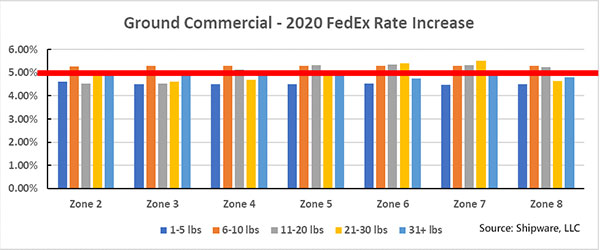
Longer zones have larger increases than shorter zones for express services: This will generally affect shippers with one distribution center more significantly. This discrepancy can be seen on the chart below:
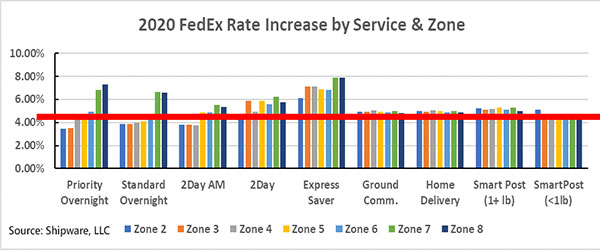
Three-day shipping has a larger increase than other services: Three-day shipping is often distributed on the same two-day/express network and is likely close for FedEx in cost-to-serve, but with lower revenue. Note the increases as displayed by weight vs. the other services (increases across weights are similar):
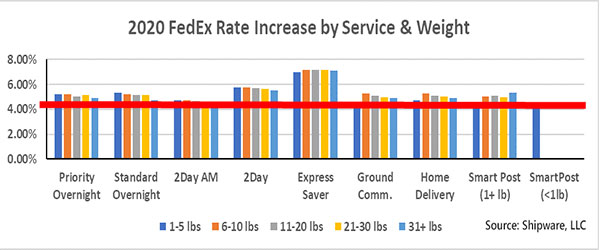
The following table shows the average increases by domestic service and the associated minimum charge increases:

This table shows assessorial increases for FedEx’s most commonly assessed charges:
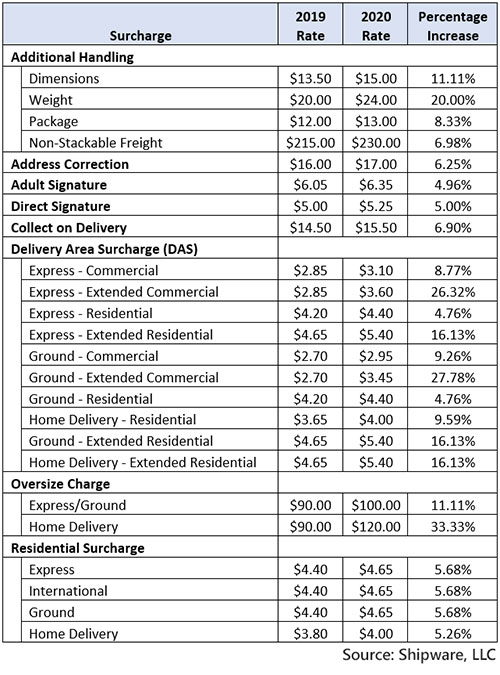
Effective Jan. 20, new surcharge ratings will occur. Some are likely to impact many shippers and further emphasize FedEx’s stance on large packages. Here are the highlights:
- Additional Handling – Weight will now apply for domestic express and ground for packages with an actual weight greater than 50 lbs. (down from 70 lbs.). 70 lbs. is still the threshold for international export and international ground.
- Additional Handling – Dimension, Packaging and Weight will now apply to US imports (greater than 70 lb. actual weight is the threshold for imports/weight)
- Additional Handling – Freight will now apply to express shipments with a handling unit measuring greater than 62 inches along its longest side (previously 70 inches)
- Oversize will now apply to express US international shipments but will not have a 90 lb. minimum billable weight (domestic and international ground are still subject to the 90 lb. minimum billable weight)
- Fuel surcharges will now apply to Additional Handling surcharges (including peak for 2020), Collect on Delivery, and Signatures; the full details are here.
- FedEx has also announced it will not assess additional fees for residential deliveries during the holidays but will continue to assess fees for additional handling ($4.10), oversize ($37.50), and unauthorized packages ($435).
As is the case with each annual rate increase, it’s vital to understand how all the changes combined will impact your individual characteristics and, ultimately, your overall shipping costs. However, understanding the financial impact to your organization is not a simple or straightforward analysis.
Matt Bohn is a Senior Consultant, Professional Services at Shipware

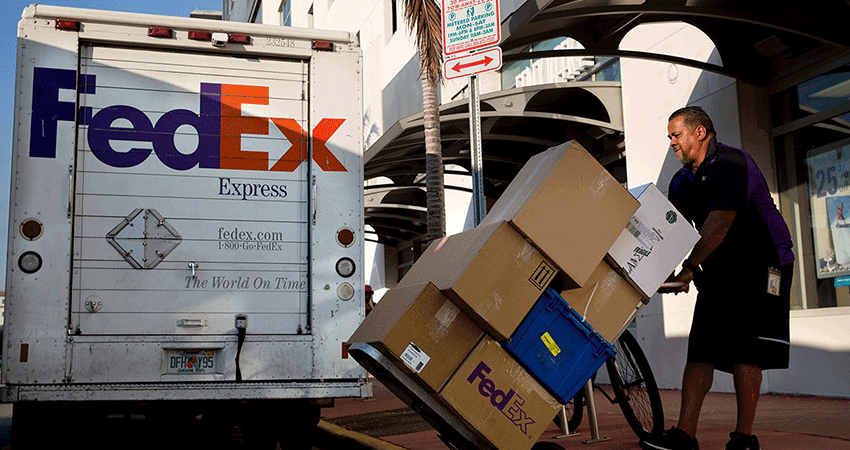
All the statistics & graphs are helping a lot to understand the complete scenario.Thanks for sharing the detailed guide.